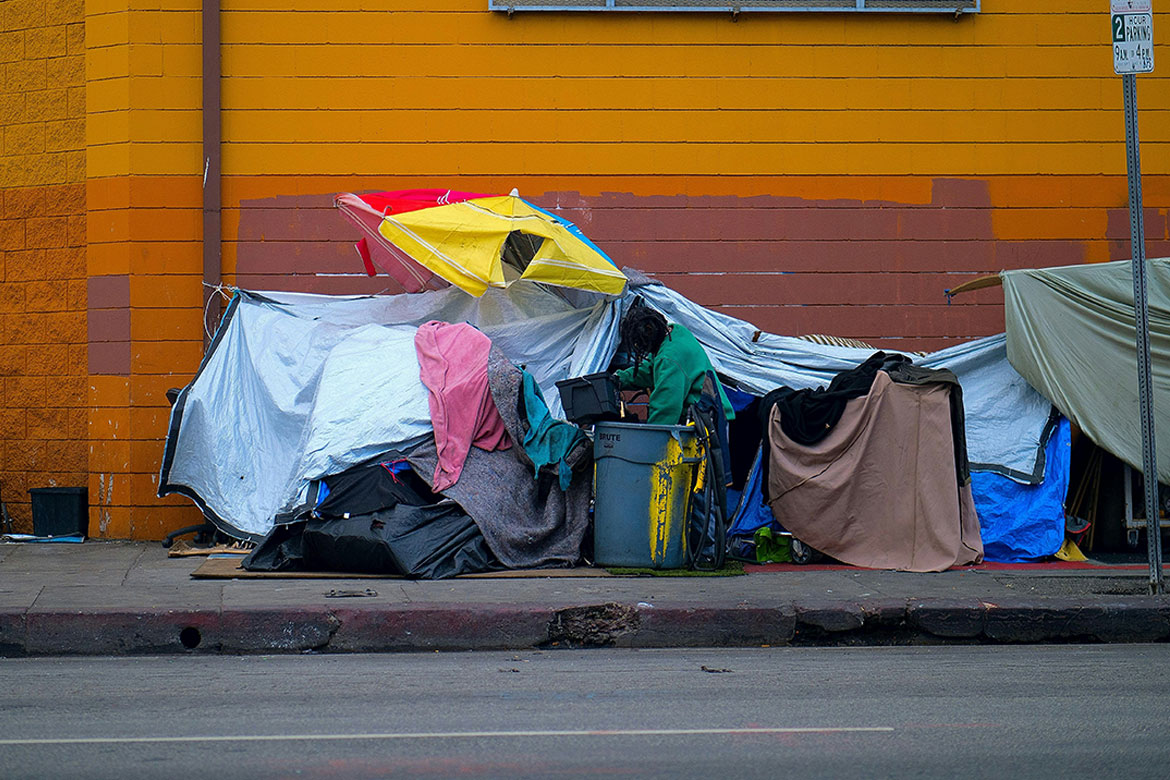
L.A. County Faces High Living Costs, UCLA Survey Finds
Deep-seated frustration with the high cost of living remains a main concern in Los Angeles, America’s largest county, as it confronts new challenges presented by the recent wildfires, the Trump Administration’s threats to immigrants and the persistent problem of homelessness, according to the UCLA Luskin School of Public Affairs annual Quality of Life Index survey.
The Quality of Life Index, or QLI, measures county residents’ satisfaction in nine categories. This year’s overall rating of 53 out of 100 matches last year’s lowest ever in the now 10 years of the QLI’s existence.
Despite the static score, the underlying elements that contribute to the overall score have unquestionably been shifting over the last 10 years. According to Zev Yaroslavsky, director of the Los Angeles Initiative at the UCLA Luskin School of Public Affairs, the overall positives that can push the score higher — particularly the physical environment, diversity and tolerance in the region — are, to some degree, overwhelmed by the negatives respondents believe are even more important, particularly the high cost of living.
New questions were included in this year’s QLI that addressed the January 2025 wildfires, which occurred just before the survey was taken.
The survey results showed that the collective trauma of the wildfires was more widespread than anticipated, with effects felt across the county.
“The wildfires that raged in Altadena and Pacific Palisades in January are the story of this year’s survey,” Yaroslavsky said. “These catastrophic events have left devastating physical and psychological impacts in their wake. Although the primary victims are those who lost their lives, homes and possessions, millions of other Angelenos have been touched by these terrifying events in myriad ways. These impacts cross geographic, economic and racial lines that can only be described as a shared trauma across Los Angeles County.”
More than two-fifths of the sample said that they knew someone personally affected by the fires. While areas near and adjacent to the two major fires reported the greatest connection to fire victims, roughly 25% of respondents in more faraway locales such as North County or the South Bay, said they knew someone who lost a home or a business due to the fires.
In terms of recovery and where the region goes from here, an overwhelming majority of county residents, 89%, believe that homeowners who lost their property to the fires should be allowed to rebuild at the same location. The same question was asked in 2019 after the Woolsey Fire near Simi Valley, and at that time, 76% agreed with allowing rebuilding in the same location. Both numbers are high, but suggest that the geographic breadth of the fires, the extent of the destruction and the collateral impacts they had on a wide swath of the county significantly influenced this year’s results.
In addition, a slight 52% majority of county residents said they were willing to increase taxes to fund efforts to improve wildfire response. This question was asked in a broad sense without respondents being presented with specific taxes or dollar amounts. Younger residents, Latinos and Asians were most supportive of a potential tax increase, while whites and African Americans were evenly split on the question.
Attitudes toward public officials, including L.A.’s mayor and the County Board of Supervisors, were also affected by the fire response, which have exacted at least a temporary political toll. In the case of Mayor Karen Bass, 37% of survey respondents view her favorably and 49% unfavorably, while the county Board of Supervisors is viewed favorably by 34% and unfavorably by 37%.
Cost of living has always been an issue of great concern among survey respondents, along with job security and the state of the economy. However, this year, cost of living has soared to its highest salience level ever: on average, respondents chose it as the most important category affecting their quality of life over all the others three-quarters of the time. This is a main contributing factor to why the overall QLI score is unchanged from last year.
“The overall satisfaction score on our QLI index is stuck for one main reason — the impact of the high cost of living. Those concerns were the highest in terms of importance of any category we’ve measured in the last decade. And cost of living continues to be the lowest rating category in terms of satisfaction,” said Paul Maslin, a public opinion and polling expert with Fairbank, Maslin, Maullin, Metz & Associates (FM3 Research) who has overseen the QLI since its inception.
“The new administration in Washington has once again brought the question of immigration and deportation to the fore,” said Yaroslavsky. “A significant percentage of county residents (44%) are worried that they, a member of their family, or a friend could be deported by federal authorities, more than expressed the same concern in early 2017, at the onset of President (Donald) Trump’s first administration (37%). This is very much an issue that is front and center on the minds of a large part of our county’s population.”
Latinos (54% concerned), residents ages 18-29 (57% concerned) and 30-39 (52% concerned) are by far the likeliest to hold this view. They are also more willing to believe that city and county governments ought to refuse to cooperate with the federal government and its new policies.
For several years, polling has consistently shown the pervasive problem of homelessness to be at or near the top of concerns throughout California and L.A. County. This year’s survey stands out in that it exposed the possibility of a slight change in the narrative. For the first time in recent years, the number of county residents who believe the problem is getting worse actually declined by nearly 10 points (from 60% in 2024 to 52% in 2025).
This may be just a glimmer of hope, as only 10% of Angelenos believe the situation is improving; but it does mark at least a small turn in what has been a persistently negative view of a serious concern.
The QLI involves a survey of 1,400 Los Angeles County residents and was conducted Feb. 23 – March 9, 2025. The QLI addresses both the overall satisfaction of these residents’ ratings based on nine distinct categories and also ranks the salience of those categories. Funding for the Quality of Life Index is provided by Meyer and Renee Luskin through the Los Angeles Initiative.
The full report will be presented April 16 as part of UCLA’s Luskin Summit, which will address recovery and rebuilding after the Los Angeles fires. In addition to Yaroslavsky, the event will feature Bass, Supervisor Lindsay Horvath, State Sen. Ben Allen and other current and former public officials, as well as scholars and community leaders.
Key takeaways:
- This year, the impact of cost of living on quality of life in L.A. has soared to its highest salience level ever.
- More than two-fifths of the sample said that they knew someone personally affected by the fires. Millions of other Angelenos have been touched by these terrifying events in myriad ways, with these impacts crossing geographic, economic and racial lines.
- A significant percentage of county residents (44%) are worried that they, a member of their family, or a friend could be deported by federal authorities.
https://newsroom.ucla.edu/releases/cost-of-living-survey-2024-luskin-ucla


